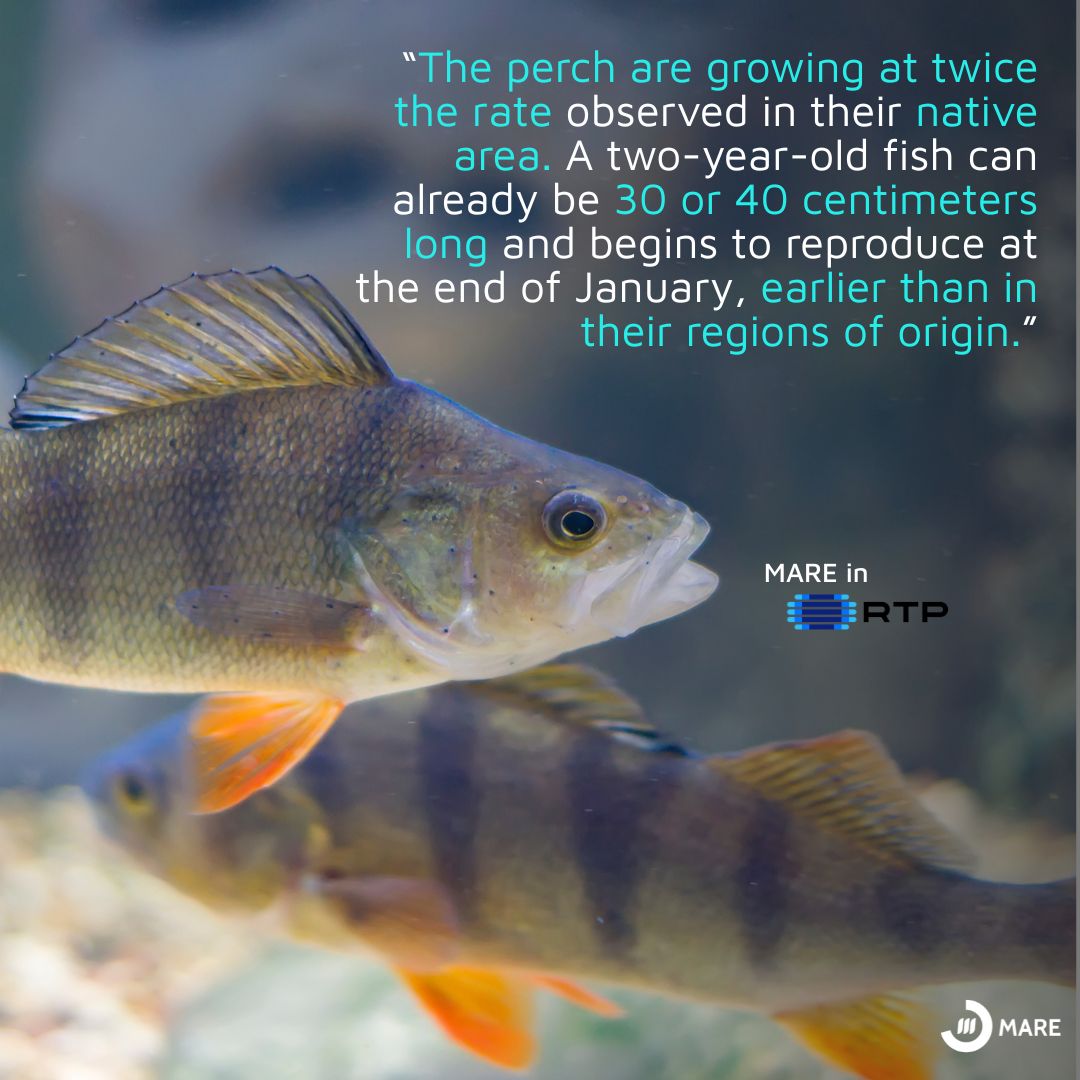Invasive species and biodiversity loss: MARE research featured in Biosfera
Researchers from MARE explain, on the Biosfera program, the impact of the European perch on native populations. 
The October 18, 2025 episode of Biosfera, broadcast on RTP2, focused on the impacts of trophic simplification in ecosystems, noting how the sharp decline in wildlife populations and the extinction of key species are simplifying food chains, making ecosystems more vulnerable to collapse.
One of the reasons for biodiversity loss is the proliferation of invasive species in aquatic ecosystems. Diogo Dias, a PhD researcher at MARE, at the Faculty of Sciences of the University of Lisbon (CIÊNCIAS), highlighted the results of studies carried out at the Meimoa dam, in the district of Castelo Branco, where native species are being progressively replaced by invasive ones.
“The dam was known for its strong presence of Portuguese boga, but it is currently being dominated by invasive species,” explained the researcher, referring to the expansion of European perch (Perca fluviatilis), a species native to Central Europe introduced in Portugal for sport fishing.
According to the researcher, this species grows rapidly and reproduces early, giving it a competitive advantage over native species.
"Perch are growing at twice the rate observed in their native area. A two-year-old fish can already be 30 or 40 centimeters long and begins to reproduce at the end of January, earlier than in its regions of origin," he added.
The MARE team has been studying the age structure, fertility, and diet of this species to understand its impact on local communities.
“We opened up the perch and studied their organs to understand what they are preying on and whether they are having an impact on native communities. In one of the specimens we analyzed, we found three native fish and an amphibian in its stomach,” explained the researcher.
The results suggest that the growing presence of European perch may be altering the trophic balance and water quality in these systems.
“We have noticed that the water is becoming a little cloudier. We don't know if we can attribute this to the perch, but it is possible that this species is putting pressure on the boga, which, as it declines, is no longer consuming some of the algae in the dam, which may be worsening water quality,” explained Diogo Dias.
The episode also highlighted that freshwater ecosystems are among the most threatened on the planet. According to a WWF report cited in the program, monitored wildlife populations worldwide have declined by an average of 73% over the past 50 years. The sharpest decline occurs in freshwater ecosystems (85%), followed by terrestrial (69%) and marine (56%) ecosystems.
Throughout the episode of the Biosfera program, different dimensions of biodiversity were addressed, from the loss of genetic diversity and the decline in native bird and plant populations to the transformation of agricultural and freshwater habitats. In common, the testimonies emphasized the need to understand the ecological processes that sustain life and the action needed to halt the degradation of ecosystems.
MARE's presence on the program reflects, once again, the importance of the research center's work in monitoring and sustainably managing aquatic ecosystems. Through studies such as the one conducted by Diogo Dias' team, MARE contributes to the identification of emerging threats, such as invasive species, and to the production of knowledge that supports public policies for conservation and the responsible use of water resources.
Episode available HERE
Text by Vera Sequeira
